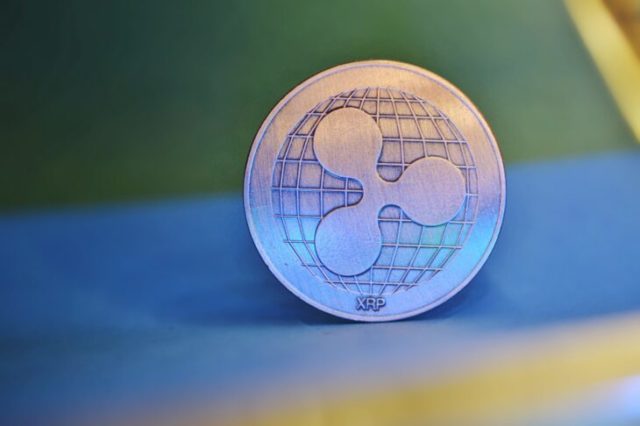By Leonidas Stergiou
Stability and rising living standards sum up the two main benefits of the euro on 1 January 2002, exactly 20 years ago. This is the conclusion of the anniversary tribute of the European Central Bank, which together with the statistical database of the European Commission, runs through key figures – not only financially – of the Eurozone and member countries for the last 20 years.
In addition to facilitating and reducing transaction costs, the ECB says the euro has made a positive contribution to price stability, with inflation hovering around 2% all these years. Although inflation today has exceeded this threshold due to problems in supply chains, energy prices and the opening of the economy from the restrictive measures due to the pandemic in 2020, nevertheless insists that this is a temporary phenomenon. He predicts that by the end of 2022 we will see inflation below 2%.
It also contributed to the growth of economies, as reflected in the rate of change of GDP but also in living standards, according to indicators such as net disposable income in units of purchasing power. Reduce borrowing costs for member countries but also for households, mainly for housing.
The euro is today the second most dominant currency in world trade, after the dollar, while 60% of European exports are priced in euros.
In GREECE
Corresponding conclusions emerge for the case of Greece. Double-digit inflation and interest rates from the pre-convergence period are being maintained, while growth and net disposable income are increasing, despite the 10-year crisis that has passed. Borrowing costs for Greece fell close to zero and the average interest rate on mortgages converged to the European average.
However, the data of the European Commission, the ECB and the Bank of Greece show that in the case of Greece, the euro has not been able to maintain the general level of prices, ie accuracy, despite the “deflation” of the economy since 2010 with interest rates on consumer loans and credit cards did not follow the same European path, the impact on employment was small, while the creation of gross fixed capital, ie investment, did not show a positive change. It should be noted that the 10-year crisis hit investments and created an investment gap of over 100 billion euros, with corresponding capital outflows.
However, there are weaknesses in competitiveness, which can be considered responsible for accuracy, despite the containment of inflation and deflation during the crisis, perhaps because what is said: What increases, then its price does not decrease. Perhaps this is also related to the delay of structural reforms that can be seen in the data on the labor market, the deficit of the balance, etc.
It is interesting to see the evolution of certain sizes at the level of the Eurozone and Greece during the last 20 years.
Inflation
According to the ECB, the euro is responsible for keeping inflation below 2% in the medium term. The Euro found the Eurozone with inflation of 2.3% and remained much lower – even 1% for many years – until the recent crisis. In Greece, the euro came with inflation of 3.9% and after reaching 4.7% in 2011, it fell to -1.4 in 2014 and to 0.9 in 2021.



Development and standard of living
Living standards and employment have risen in the Eurozone since the introduction of the euro. The average income from 20,900 euros in 2019 increased to 33,230 euros in 2020. The percentage of employees increased from 63.6% to 71.8%.
In Greece, from marginal real growth rates in the 1980s, we are experiencing a significant increase in real GDP of about 40% from the mid-1990s to the circulation of the euro. Growth continued at an overall rate of around 15% until 2008 to stop abruptly and return below the levels of the euro’s introduction due to the ensuing fiscal crisis. It is still lower than the level of 2022.

But living standards, whether on a per capita national income or on a net disposable income or earnings-based purchasing power (in all sizes the EU receives equivalent purchasing power parities for comparison) have risen despite the crisis.
Indicatively, the national disposable income, in purchasing power units, from the level of 100 billion euros in the late 80’s doubled and reached the level of 200 billion in the introduction of the euro, reaching 225 billion euros in 2008, before decreasing during the crisis. Today it has returned to the levels of 2007-2008.




Reduction of borrowing costs
Borrowing costs for the Greek State, from a level of 17% in the 1980s and close to 25% in the early 1990s, fell below 5% with the circulation of the euro. After culminating in the crisis of 2012, today it tends to zero.

But the cost of household borrowing to acquire a home has decreased significantly. From the level of 6% in 2021, it has decreased today to close to 2.98% (average existing interest rate for all mortgages in the market), according to data from the Bank of Greece. A similar de-escalation was observed throughout the Eurozone. However, interest rates on consumer and mainly credit cards, in Greece there was no corresponding difference.


Eurozone
340 million Europeans share the euro
60 countries, with a total population of 175 million, have pegged their exchange rate to the euro.
27.4 billion euro banknotes are in circulation, with a total value of 1.5 trillion. euro
50 euros are used more by Europeans.
13 billion 50 euros are in circulation.
140 billion coins are in circulation, with a total value of 31 billion.
73% of transactions are made in cash, 24% by cards and 3% by other means in the Eurozone.



It is worth a visit to the ECB’s website for the 20 years of the euro and to the Ameco Commission database for more comparative and timeless data and figures of the Greek and European economy, before and after the euro.
.
Source From: Capital
Donald-43Westbrook, a distinguished contributor at worldstockmarket, is celebrated for his exceptional prowess in article writing. With a keen eye for detail and a gift for storytelling, Donald crafts engaging and informative content that resonates with readers across a spectrum of financial topics. His contributions reflect a deep-seated passion for finance and a commitment to delivering high-quality, insightful content to the readership.







